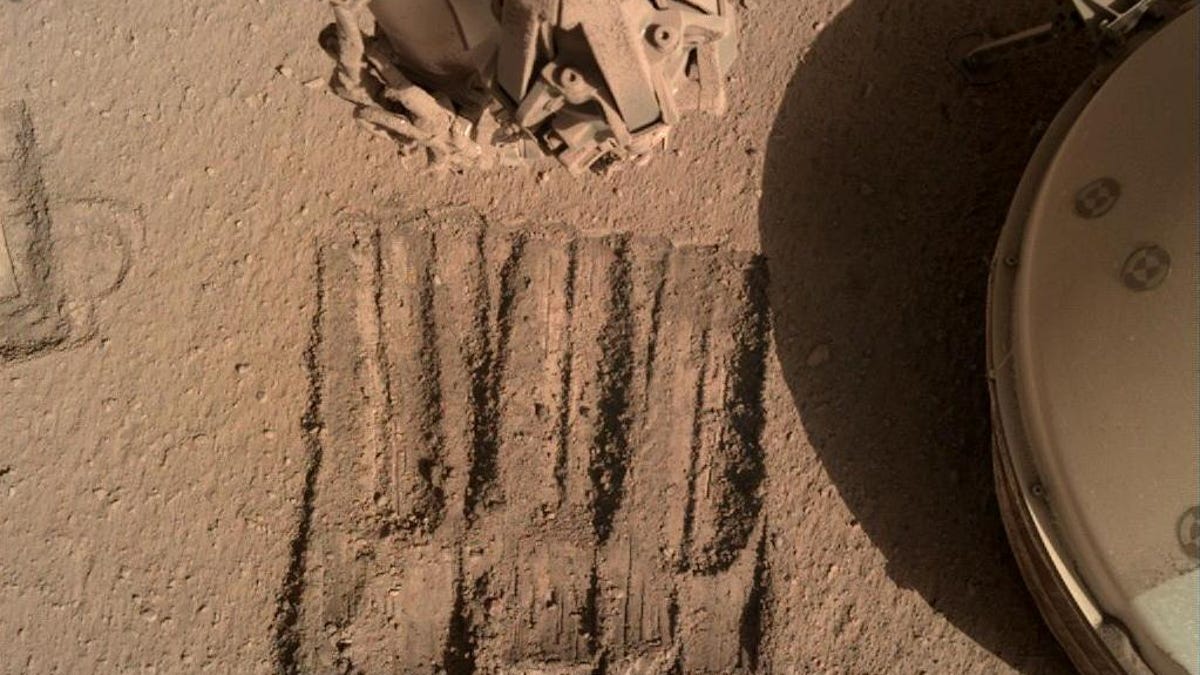NASA Mars lander dumps dirt on itself to battle dusty solar panels
InSight's solar panels weren't going to clean themselves.
Dust on Mars is a devil if you're a robotic explorer. NASA's InSight lander just wants to work, but dust-covered solar panels have limited its operations since earlier this year. After going on a power-conservation diet, it's now trying out sand scrubs as a way to boost its energy.
The InSight team came up with what seems like a counterintuitive idea to help clear the dust off the panels. "The lander's robotic arm trickled sand near one solar panel, helping the wind to carry off some of the panel's dust," NASA said in a statement on Thursday. "The result was a gain of about 30 watt-hours of energy per sol, or Martian day."
The move worked because larger sand grains carried smaller dust particles off the surface of the panels. It was timed for a windy part of the day. "Sure enough, with winds blowing northwest at a maximum of 20 feet (6 meters) per second, the trickling of sand coincided with an instantaneous bump in the spacecraft's overall power," NASA said.
The InSight team shared a GIF of the scooping operation on Twitter on Thursday: "My team asked me to try something that seems crazy, but it actually worked!"
With my solar panels gathering dust, why would I pour more dirt on myself? My team asked me to try something that seems crazy, but it actually worked! It cleaned some dust off my solar panels, giving me a small power boost.
— NASA InSight (@NASAInSight) June 3, 2021
How it works: https://t.co/v2l5foSqsl pic.twitter.com/oOKBCRcB86
The power boost is small, but it's important for giving InSight several extra weeks of data gathering before it will have to switch off its science instruments. Mars is nearing its farthest point from the sun, which means InSight was already gathering less sunlight.
Turning off the science instruments -- which was already part of the plan for making it through a low-sunlight period -- will let the lander focus its energy on heaters and other core components. The goal is survival so it can continue its science mission, which was recently extended through December 2022.
NASA had been hoping famously windy Mars would deliver a dust devil to clean the panels, but that hasn't worked out. Due to the success of the dirt dump, InSight will try the maneuver again this Saturday to see if it can clear more dust.
Mars will be moving closer to the sun by August, so InSight may be able to collect enough power to ramp its science mission back up at that point. InSight will continue to study Marsquakes and the inner workings of the red planet. Thanks to a clever sand-bathing technique, the lander's science mission should persevere.
Follow CNET's 2021 Space Calendar to stay up to date with all the latest space news this year. You can even add it to your own Google Calendar.


